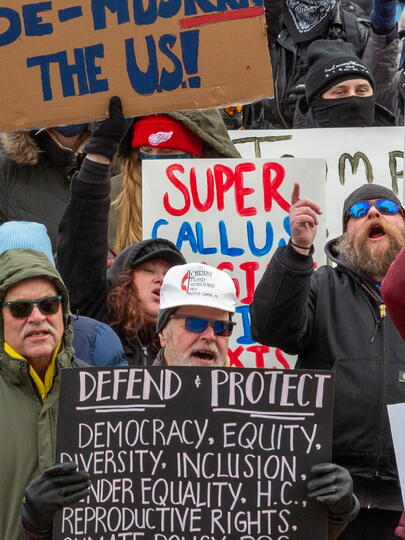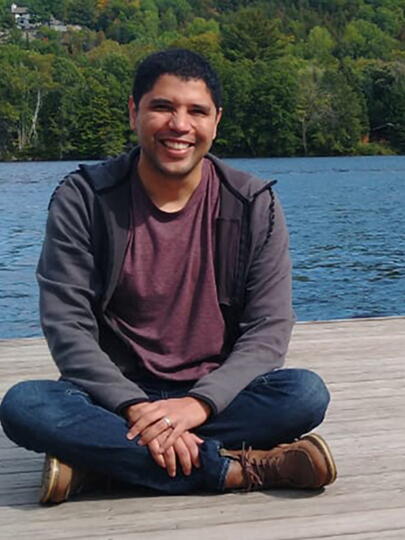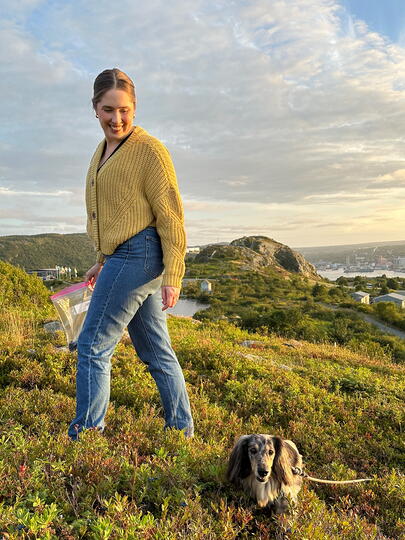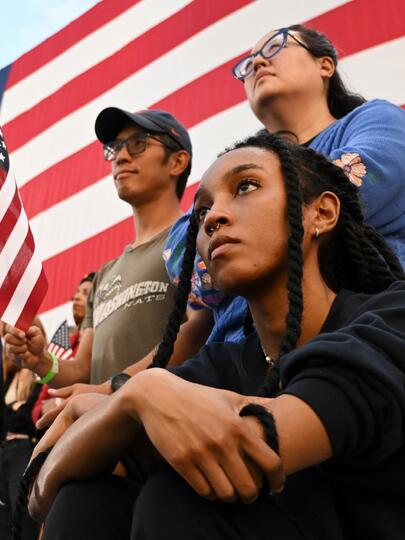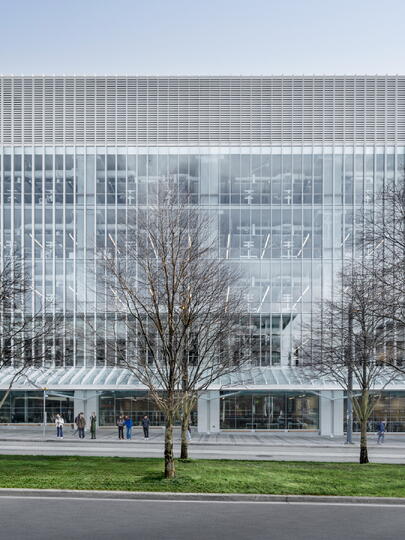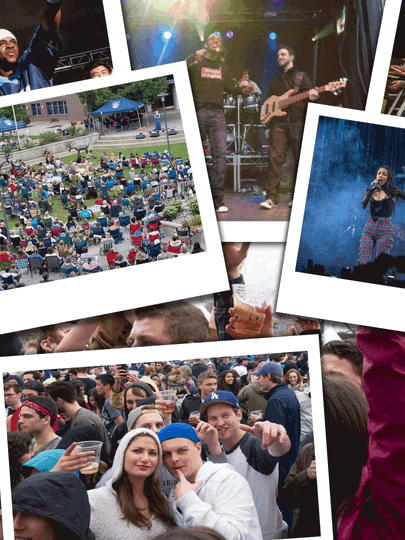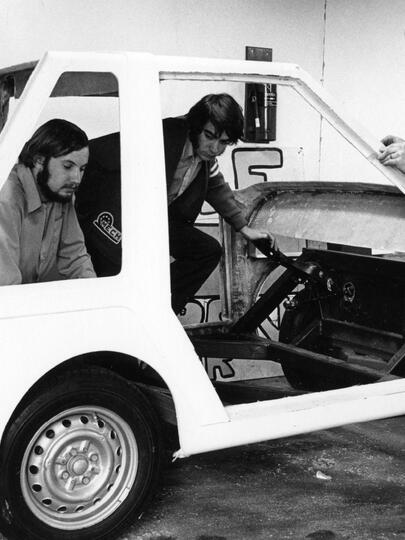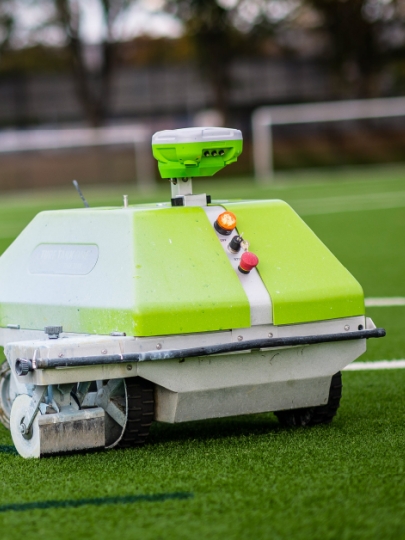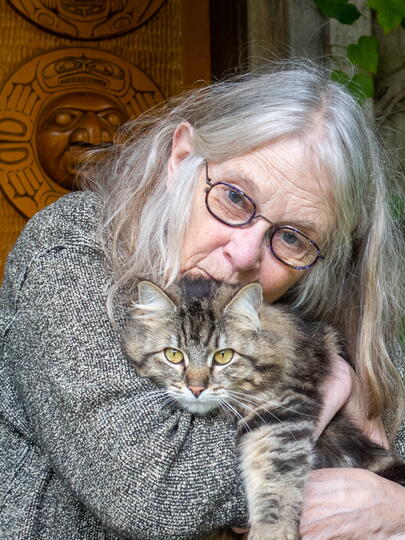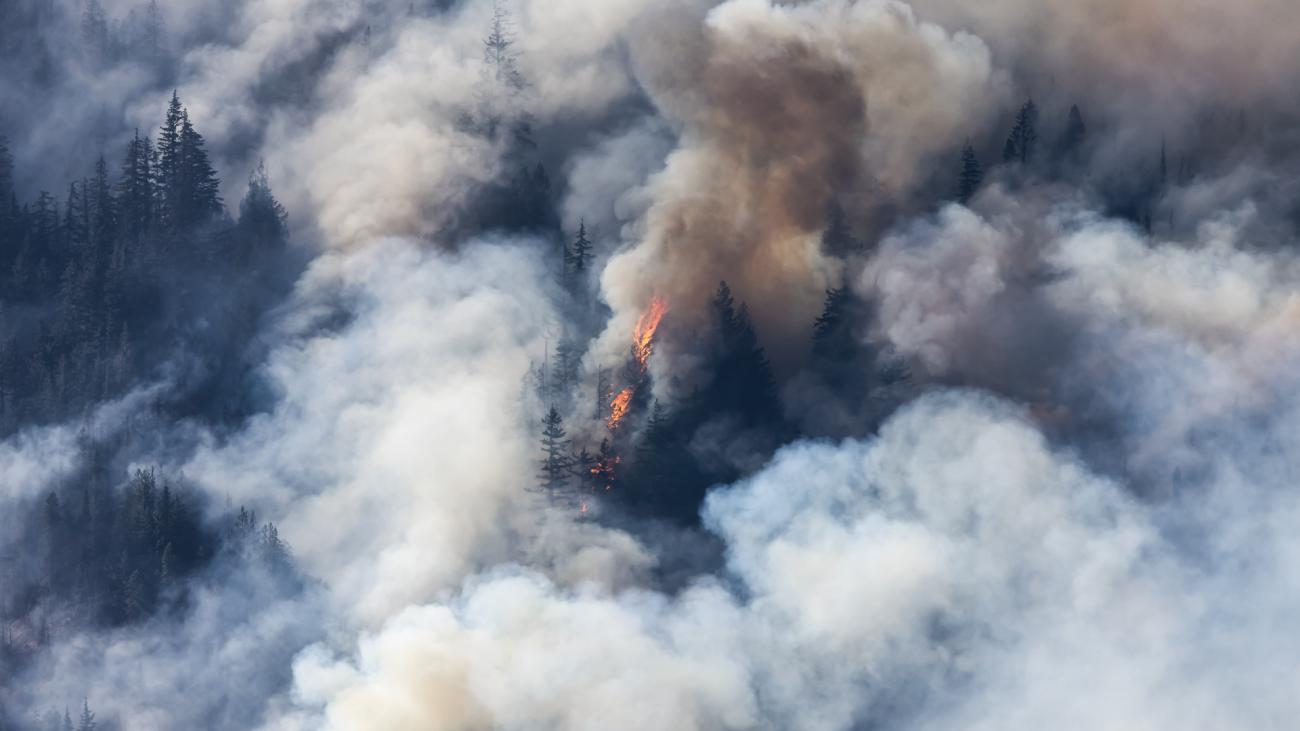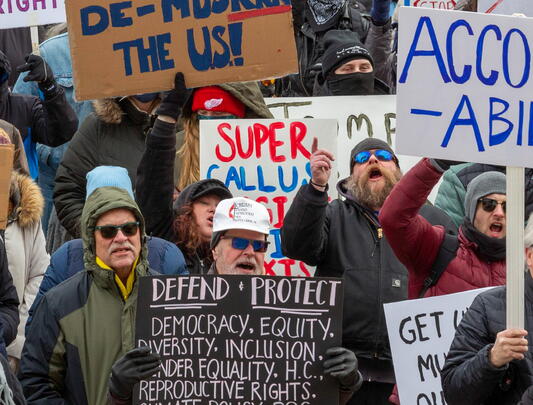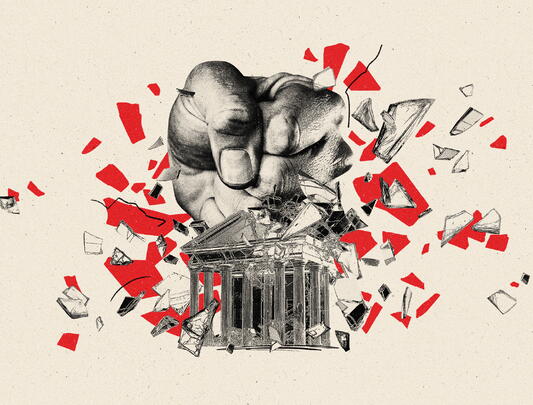The 2024 wildfire season has started — here’s what we need to know
Last year’s wildfire season marked BC’s most destructive on record: 2.8 million hectares burned, more than double any previous year. UBC researchers Dr. Lori Daniels (MSc'94) and Dr. Mathieu Bourbonnais actively work on projects enhancing wildfire resilience, collaborating with community, government, private-sector and academic partners, and First Nations.
Dr. Daniels is the Koerner Chair in the Centre for Wildfire Coexistence at UBC, focusing on proactive management to increase ecosystem and community resilience to climate change and wildfires. Dr. Bourbonnais is a former wildland firefighter and now assistant professor at UBC Okanagan who employs advanced technologies to study wildfire risk and behaviour.
We spoke with Drs. Daniels and Bourbonnais about the outlook for wildfire season, and how communities can prepare for a challenging year.
What should we expect in terms of wildfire magnitude and severity this year?
Dr. Lori Daniels (LD): Predicting the fire season is challenging, but we are hoping for spring rains after the dry winter. Most of the province is in a multiyear drought, which contributed to the severe 2023 fire season. This persistent drought has primed us for another intense summer. Almost a hundred fires from last season are still burning in northeast BC, with new wildfires breaking out. Now is the time to start thinking about how to be “FireSmart” and prepared!
What progress has been made so far to help communities reduce their wildfire risk?
LD: In BC, there’s a significant effort to assess forest fuels surrounding communities — particularly in warm, dry, fire-prone regions — then proactively thin the forest, removing small trees while preserving larger ones for shade, wildlife habitat, and biodiversity. Reducing forest fuels aims to alter fire behaviour, slowing a fast-spreading crown fire, and shifting it to a less intense surface fire. This enhances firefighters’ ability to contain fire before it reaches homes. Successes include the 2021 Tremont fire near Logan Lake and the 2020 Christie Mountain fire near Penticton.
There are extra benefits when forest thinning treatments are combined with controlled burns in the understory, whether through prescribed fires or Indigenous-led cultural burns. One example of success is from the ?aq’am First Nation in southeast BC.
Dr. Mathieu Bourbonnais (MB): From a community protection standpoint, years or decades may pass before fuel treatments face a real test. In the case of ?aq’am First Nation, timely implementation of fuel treatments prevented potential devastation and helped save critical infrastructure, including many homes and the Cranbrook International Airport during the St. Mary’s River fire in July 2023. We are seeing more fuel treatments tested by wildfires throughout the province, including Logan Lake and West Kelowna, and in all cases the outcomes would have been far worse if fuel mitigation work had not been completed.
The success of these initiatives owes much to partnerships among First Nations, communities, BC Wildfire Services, private contractors, and funding agencies. While these plans require years of planning with a narrow implementation window, their effective execution can protect communities and restore wildlife habitat and cultural resources.
How is technology shaping wildfire management?
MB: Drones, satellite imagery, and related tech have the potential to contribute significantly to wildfire management, offering insights into landscape fuels and forest health. For example, drones with thermal cameras can detect hotspots at night when aircraft can’t operate. My team is working with Rogers Communications to develop a cost-effective, AI–driven forest monitoring system, tracking real-time conditions for fire risk prediction and firefighting efficiency.
As wildfire management grows more challenging due to extreme conditions, pre-emptive mitigation is essential. We analyze factors like fuel types and condition, weather, and wind speeds to accurately anticipate fire risk and behaviour.
What roles do you play in advancing these efforts?
LD: I study wildfire-forest interactions using tree rings, field data, and fire behaviour models, while Mathieu focuses on wildfire risk by monitoring microclimate changes and their impact on fuel dynamics across landscapes. Together, these approaches help us understand how proactive management may affect wildfire risk. For example, while reducing tree cover may increase dryness and risk, it also reduces fuel availability and mitigates fire intensity. Our combined research can verify complex effects, to avoid unforeseen consequences.
Mathieu and I coordinate research efforts across UBC’s Vancouver and Okanagan campuses. We gather data to support proactive mitigation in collaboration with multiple agencies including the BC Community Forest Association, BC Wildfire Service, and local experts from multiple Indigenous communities.
How can BC and Canada better manage wildfires?
LD: Wildfire management is becoming more challenging in BC, across Canada, and around the world due to climate change. Transforming forest and fire management is critical for our society to adapt and be ready for future fire seasons.
Across BC, the forest industry must adapt, shifting focus from timber production to landscape resilience. We need to reduce the amount of waste wood, currently burned in piles, by investing in the bioeconomy to invent new ways to use small trees. Other innovations include reintroducing prescribed fire as part of reforestation, using partial harvesting to retain protective tree cover in drought-prone environments, creating strategically located cut-blocks, and regenerating fire-resistant species to redirect wildfire spread across landscapes. Diversifying our forests and their management will also diversify the jobs held by forest professionals.
Equally important are the proactive fuel treatments in forests surrounding communities: thinning, prescribed and cultural burning. Public education by engaging homeowners through the FireSmart program is also high priority. However, we need greater government commitment and increased funding to support these local initiatives.
MB: Public and commercial interest in wildfire has surged recently and with that it’s important to show successes and failures in adaptation and mitigation and to change perceptions around prescribed fire. Yet, the current $30-million mitigation budget falls short compared to the billion dollars that firefighting cost BC last year. We have to increase the commitment to ensure sustainable support for proactive community fuel treatment programs. While there has been progress in BC and Canada, we can learn from other regions — for example the US and Australia — that actively use fire to mitigate risk.
How do individuals and businesses adapt to increasing wildfire risk?
LD: Each of us has a role in coexisting with fire. We encourage homeowners to “FireSmart” their homes and yards this spring, perhaps starting this Easter long weekend, in advance of fire season. Check roofs, clean gutters, and clear yard clutter. Opt for non-flammable landscaping when planning gardens and avoid cedar hedges and junipers. In apartments or townhouses with wood siding, suggest safer landscaping options like rock gardens if your home is currently surrounded by wood chips.
Spring has arrived early in BC’s southern interior, prompting outdoor activities. Be sure campfires are fully extinguished, be aware that motorbike and ATV engines can spark grass fires in dry areas, and refrain from discarding burning cigarettes.
MB: Over the short and long term, we must intensify our efforts to reduce wildfire risk around communities. The landscapes and forests near our towns are increasingly susceptible to fires, making containment harder and causing greater destruction. Strategies such as mechanical thinning to remove biomass from the forest and expanding the use of prescribed fires are important, and we should support communities and First Nations that are leading these initiatives.
Residents should actively inquire about community wildfire plans and engage in discussions on risk management. Businesses like Rogers can also play a significant role in advancing technological research. Messaging efforts, such as tourism bodies promoting the acceptance of wildfires as part of the landscape, can help drive public awareness and engagement.
Long-term planning and proactive management are essential. Each season that passes without implementing these measures means we miss opportunities to enhance resilience and learn to coexist with wildfire.
Tools and resources:
- FireSmart BC: tips to prepare your home, protect your neighbourhood, and more
- BC Wildfire Service: current wildfire situation and other news
- Wildfire evacuee guidance: what to do if you receive an evacuation alert or order
- BCCDC fact sheets: health effects and preparing for wildfire smoke
- HealthLink BC: wildfires and your health
- Fundamentals of Wildland Fire Ecology and Management: UBC Okanagan course for professionals
- Centre for Wildfire Coexistence at UBC
